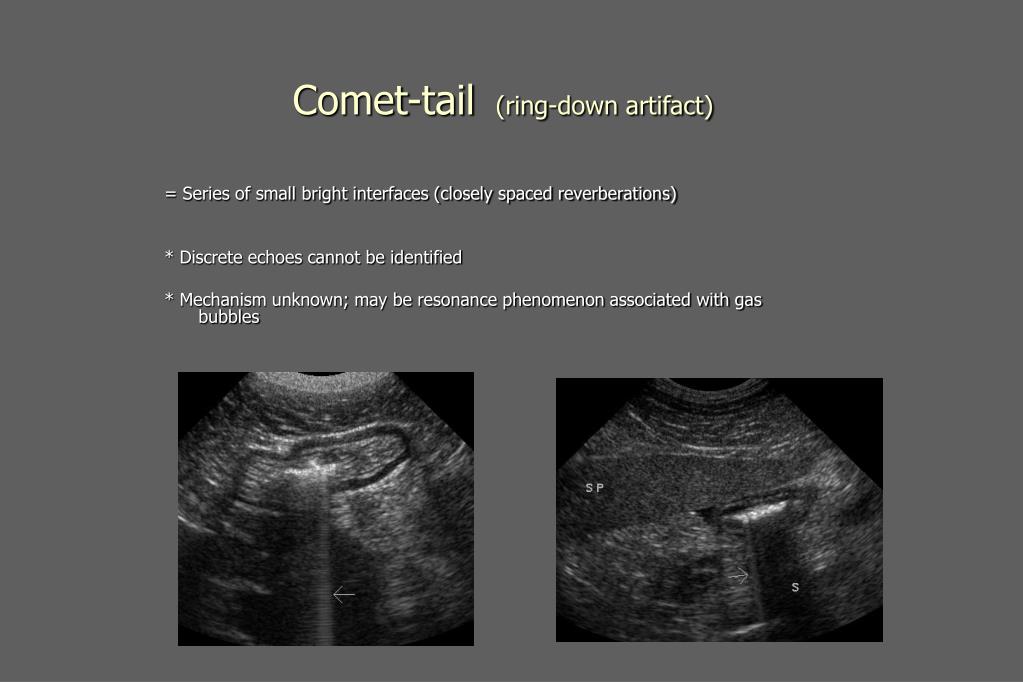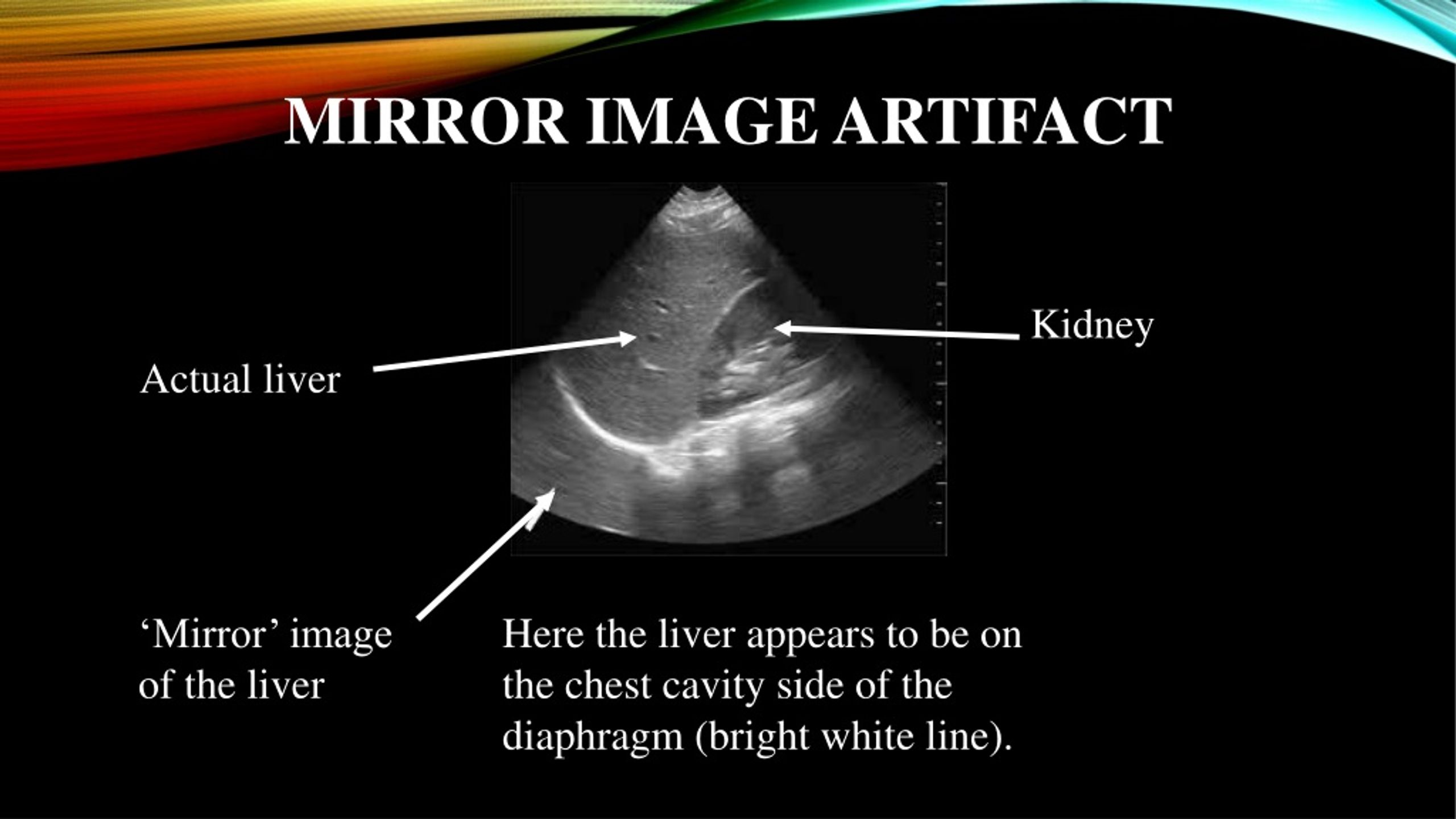

The examiner should use a liberal amount of conduction gel to avoid the artifact caused by a lack of effective sound wave transmission ( Figure 13.3).įIGURE 13.2 Picture demonstrating the use of conduction gel to enhance the transmission of sound waves between the tissue and the transducer.įIGURE 13.3 Sonogram demonstrating the effect of inadequate conduction gel on the ultrasound image. They need a medium such as gels or liquid to create a good image. This is necessary because ultrasound waves do not conduct well through air. This is usually done with conduction gel ( Figure 13.2) or less frequently stand-off pads.
#Ring down artifact skin#
Ultrasonography requires a sufficient amount of conduction median between the transducer and the skin of the patient for the sound waves to adequately travel from the transducer to the tissue and back to provide a clear image. Failure to recognize the effect of anisotropy on an image like this could lead to an erroneous conclusion of pathology. This artifact can be resolved by performing a heel-to-toe rock with the transducer to change the angle of incidence to the distal portion. This is anisotropic artifact related to this portion of the tendon not being perpendicular to the incident sound beam. Note the hypoechoic appearance of the tendon fibers as they curve at a steep angle to insert into the calcaneus.

The normal fibrillar architecture of the tendon is seen toward the left of the screen where the angle of incidence is orthogonal to the tendon. The yellow arrows represent the direction of the approaching sound waves from the transducer. The image displays a long-axis view of a normal Achilles tendon with insertion on the calcaneus. These maneuvers are discussed in Chapter 5.įIGURE 13.1 Sonogram demonstrating an example of signal change due to anisotropic artifact. Techniques such as toggling the transducer and heel-to-toe rocking should be used to reduce anisotropy. This is discussed in more detail in Chapter 14. Effort should be made to maintain the incident sound wave as close to perpendicular to the needle as possible. Conspicuity of a needle is also affected by anisotropy. Most other tissues have a degree of anisotropy. Tendons are particularly prone to anisotropic artifact due to their high reflectivity and uniform linear orientation ( Figure 9.10) (see Chapter 7). Therefore, the examiner should attempt to keep the direction of the beam as close to perpendicular as possible. This occurs when the approach of the sound waves is less than perpendicular (ie, angle of incidence greater than 0 degrees) ( Figure 2.7).

Anisotropic artifact refers to a darkening and loss of resolution of the image ( Figures 4.7 and 13.1). It refers to the property of tissue to differentially conduct or reflect sound waves back to the transducer based on the angle of incidence of the sound waves. A detailed discussion of all of the potential artifacts that can be encountered with ultrasound is beyond the scope of this text however, the more common ones are mentioned.Īnisotropy is the most significant and commonly encountered artifact with the superficial structures in musculoskeletal ultrasound and it is particularly potentially problematic when using linear transducers. Artifacts can even provide clinical clues for underlying pathology in some circumstances. Others must be simply recognized for appropriate image interpretation. Some artifacts such as anisotropy can be minimized with appropriate scanning technique. Knowledge of artifacts is critical for reliably interpreting images in musculoskeletal ultrasound. Artifacts in musculoskeletal ultrasound refer to features in the ultrasound image that do not reliably represent the anatomic structure underneath the transducer.


 0 kommentar(er)
0 kommentar(er)
